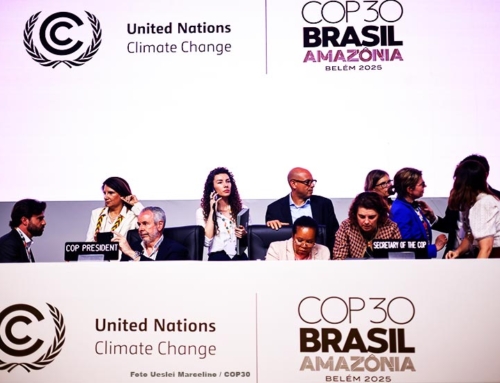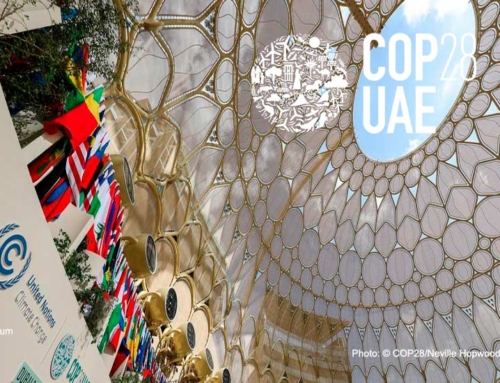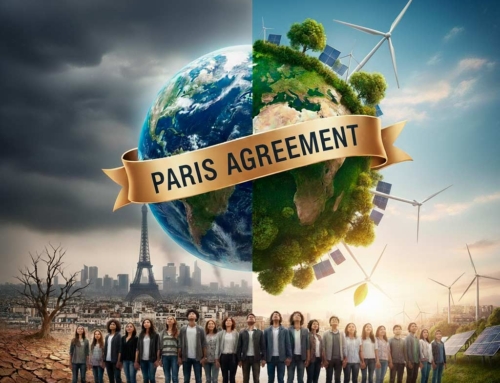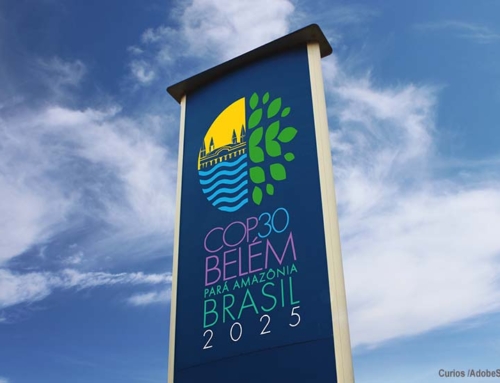COP25 will undoubtedly mark the 2020 climate agenda. The destiny has desired IFEMA facilities to be the setting for one of the most important, difficult and most stressful COPs that have been envisioned since these climatic summits were created in 1995.
The challenge of the Madrid Fair (IFEMA) is to set up an event in 32 days, when sometimes it takes years of planning to carry out a similar presentation. The challenge of the 197 members of COP25 is to move the Paris Agreement forward, with the eyes set in 2020. This will be the main objective.
It will be Spain’s turn to be the venue where the hopeful document’s luck will begin to be played, and perhaps the destiny of humanity itself. Madrid is the last cliff to reach the top of Glasgow 2020, where the Paris Agreement awaits us to start its application. That is why we said that what happens between December 2 and 13, 2019 will mark next year’s climate memorandum.
Futurology is not our job, but we glimpse, as said before, that the spaces of the Madrid Fair park will be a battleground between climate activists and deniers. We hope that a Waterloo does not leave there for the climate agreement signed in Paris in 2015, just 200 years after the real battle of Waterloo, which marked the end of Napoleon Bonaparte era.
Why do we say this? For the black clouds that have appeared on the skies of 2019, and especially on those of October and November, which a friend called the months of anti-environmentalism. This whole picture, briefly reflected, it does not allow too much space to excessive optimism.
Since the first media appearance of Greta Thunberg, a year ago at COP24, and his subsequent massive presence on the networks, it captured the attention of millions of young people on the climate issues that affect the planet and the future of all, and especially that of the youngest. But it also caused an earthquake in the denial fiefs, who soon reacted, leading their batteries against the young 16-year-old activist. This showed with clarity that there are still many who have no intention of abandoning fossil fuels and greenhouse gas emissions.
These are the dark clouds that covered much of 2019, fueled by the confirmation of the United States to leave the Paris Agreement, a blow to the fight against climate change, not only for its direct implications but for its collateral consequences. It is not a small thing that the first world power, and second largest emitter of greenhouse gases, ignores science and clings to continue extracting and burning fossil fuels. This could induce some countries to follow their example and others who, while remaining within the Agreement, fail to comply with their letter and spirit but especially their quantitative obligations.
This picture is what allows us to anticipate the alleged struggle that may develop inside the walls of IFEMA. Hopefully we are wrong, and everything goes on rails in the COP25, pardon, navigate with good wind at COP25.
The practical objectives of COP25 will be focused on reviewing the ambition of the countries and adjusting them to the levels required by the Paris Agreement, as well as giving the final touches to the necessary guidelines so that the climate agreement is ready for when it begins its application in 2020. The other topics to be discussed are renewable energy, circular economy, ecosystems, biodiversity and electromobility.
In Madrid, special emphasis will be placed on the main “Oceans” and “Cryosphere” themes, based on the advice given in the special report of the Intergovernmental Panel on Climate Change (IPCC), presented in Monaco, on 25-09 -2019. The Cryosphere refers to the frozen regions of the planet, such as snow, glaciers, permafrost, sea ice and Arctic and Antarctic ice. (You can find above the address of the document, presented in seven pages in PDF).
Some selected paragraphs of the IPCC special report:
The oceans and the cryosphere – the frozen areas of the planet – play a decisive role for life on Earth. A total of 670 million people living in high mountain regions and 680 million people living in low-lying coastal areas depend directly on those systems. In addition, four million people live permanently in the Arctic region, and small island developing states are home to 65 million people.
Global warming is already 1 °C with respect to pre-industrial levels due to past and present greenhouse gas emissions, and there is overwhelming evidence that this has serious consequences for ecosystems and people. The oceans have warmed, their acidity has increased, and their productivity has diminished. The melting of glaciers and ice sheets causes sea level to rise, and extreme coastal phenomena are increasingly violent.
(…) New indications are provided that show the benefits of limiting global warming to the lowest possible level, in line with the objective that the governments set themselves in the 2015 Paris Agreement. An urgent reduction of greenhouse effect gas emissions to limits the magnitude of changes in the oceans and the cryosphere and allows the preservation of ecosystems and livelihoods that depend on these regions.
For the preparation of the report, more than 100 authors from 36 countries have evaluated the most recent scientific literature on the oceans and the cryosphere in a changing climate and have cited approximately 7,000 scientific publications.
The IPCC special report is a fundamental scientific contribution to world leaders that will congregate in upcoming climate and environment negotiations, such as the twenty-fifth session of the Conference of the Parties to the United Nations Framework Convention on Climate Change (COP25).
Source: IPCC. IPCC Press release. Choices made now are critical for the future of our ocean and cryosphere. Retrieve from https://www.ipcc.ch/site/assets/uploads/sites/3/2019/09/SROCC_PressRelease_EN.pdf







Leave A Comment